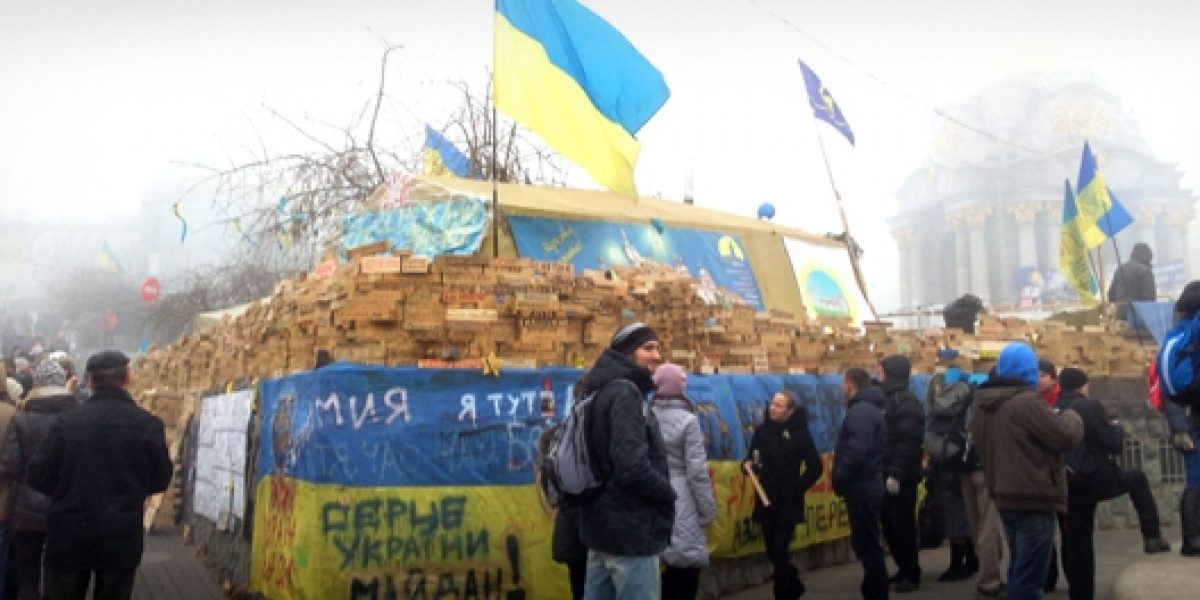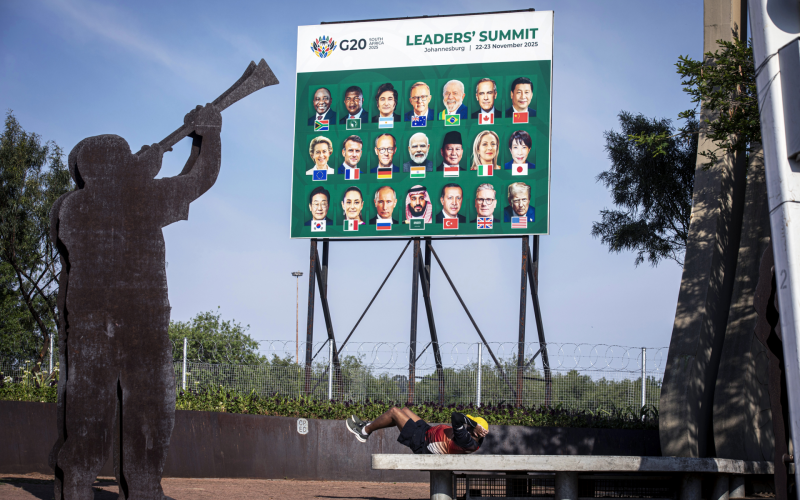The former Soviet republic, independent since 1991 and with a population of 46 million, is faced with a choice of aligning itself closer to the European Union (EU) or Russia. The country’s unique geo-political location between the two actors makes it a highly desirable of area of influence for both.
Since 2010 the Ukrainian government has been in talks to sign an Association Agreement with the EU. This is a treaty between the EU and a non-EU country to create a framework for co-operation between them, in the areas of trade, politics and security. But Russia considers Ukraine part of its near abroad, and thus its sphere of influence. Greater proximity to the EU would bring the West to Russia’s doorstep. The conflict over the Ukraine’s direction resulted in Russia starting a trade war against its neighbour. It culminated in the summer of 2013, when Russian customs stopped Ukrainian exports, from entering the country. In late November 2013, a week before the EU Association Agreement was due to be signed, the Ukrainian government indefinitely suspended the process.
This last minute U-turn caused much controversy in the country: praised by government supporters, it was rejected by the opposition, who saw the move as a symbol of abandoning a European course, in favour of closer linkages to Russia.
A peaceful student protest against the government’s move in the capital’s independence square – Maidan – was brutally dispersed by Ukraine’s special forces, but more and more people took to the streets. Maidan became a barricaded area in Kyiv, hosting demonstrators from all walks of life. Opposition parties continue to regularly hold pro-EU and anti-government rallies, often attended by hundreds of thousands of citizens. The protests are peaceful and Maidan has become a de facto autonomous microstate, providing food, shelter, healthcare and education (in form of daily free public lectures on various topics) to its temporary and permanent residents.
However, not everyone in the country supports the protests. The majority of the population in western and central parts of Ukraine, and especially the youth and middle class, indeed want to break away from the country’s communist past and the looming shadow of Russia. But most people in the eastern parts of the country are Russian-speaking and feel that Ukraine needs to re-establish closer ties with its large eastern neighbour. This could mean joining the Customs Union, an alternative to the EU, and President Putin’s pet project, which currently consists only of Russia, Belarus and Kazakhstan. Pro-EU activists describe it as a neo-colonialist project initiated by Russia to regain political and economic influence over former Soviet states. However, those who propagate a closer alliance with Russia claim a shared history, culture and mentality, stating that certain European values, such as rights of sexual minorities, are alien to Ukraine.
The direction Ukraine will take has significant implications for the region. The country’s protest movement represents a threat to some of its authoritarian neighbours, and not for the first time. In 2004, people power in the ‘Orange Revolution’ overturned the fraudulent election results in Ukraine. Customs Union leaders would not want their populations to take note of events in Ukraine and try to replicate them. Since 2004, Russia’s fears of a similar scenario taking place resulted in Duma (the Russian parliament) removing all preconditions which made the Ukrainian uprising possible, such as independent political parties, television and non-governmental organisations. Protests in Russia, following Vladimir Putin’s third election as President in 2012 were put down with force. Both Belarus and Kazakhstan have a history of violent government crackdowns on protesters.
It is also important to bear in mind that while Ukraine’s heads of state have always left office after two constitutional terms, Custom Union members do not boast such democratic records. In one way or another, Putin has been in control of Russia since 1999, while Belarus’ Alexander Lukashenko and Kazakhstan’s Nursultan Nazarbayev have been in charge of their countries since 1994 and 1989, respectively.
The two choices for Ukraine are perhaps best illustrated by the Freedom House ratings of its immediate neighbours to the west, who recently became EU members, and those of its potential partners in the Customs Union. Ukraine’s own 2013 Freedom House rating was 3.5 (with 1 being the best and 7 being the worst), meaning it was ranked as ‘partly free’, and thus could easily move to either side of the spectrum in the future. Customs Union members Russia, Belarus and Kazakhstan were all rated ‘not free’ and received ratings of 5.5, 6.5 and 5.5 respectively. In contrast, Ukraine’s EU-member neighbours, Poland, Slovakia, Hungary and Romania, were all classified as ‘free’, and received ratings between 1.0 and 2.0.
Shortly after Ukraine’s withdrawal from the EU Association Agreement, the country’s president, Viktor Yanukovych, signed numerous trade agreements with Russia and received a hefty loan of US 15 billion, described by Putin as an act of ‘brotherly love’. While no love was lost between the two countries, the loan will certainly keep Ukraine under Russia’s influence for the foreseeable future. Russian officials have already talked about demanding the money back, should any agreements with the EU be signed. Some analysts have questioned whether Ukraine was actually planning to sign the Agreement at any point, or whether this was a bluff to obtain a better deal from Russia all along.
Joining the Customs Union would likely further entrench corruption in Ukraine and mostly benefit the elite, while an Association Agreement with the EU would assist the country in changing its political and economic systems to ensure transparency, the rule of law and elimination of patronage. However, the EU is currently unable to offer much more than mere statements of support to the protesters in Kyiv and condemnation of police brutality. Europe most likely lost Ukraine long ago – after the 2004 Orange Revolution. While the revolution was supported by the EU verbally (and according to some sources financially), the political will to admit Ukraine as a new member into its ranks was lacking. Arguably the main reason for this was that six months prior to the events in Ukraine, the EU has already admitted ten new members, including three of Ukraine’s neighbours. Since then, Russia has become stronger, often flexing its political, economic and even military muscles. Understandably, the EU does not seek a direct confrontation with Moscow.
According to the official EU statements, the organisation remains ready to sign the Association Agreement. However, the conclusion of Latvia’s EU’s presidency, (also a former Soviet republic that clearly sympathised with Ukraine and wanted to prevent it from falling under Russian influence) means that Ukraine lost a champion of its European ambitions at the highest level. Even though Ukrainian officials publicly maintain that the country has no intention of joining the Customs Union and will continue work towards signing the EU Association Agreement in 2014, actions speak louder than words. The situation is currently uncertain and much will depend on whether the country decides to keep manoeuvring between Russia and the EU or openly pick one partner. Ukraine’s presidential elections in 2015 are likely to be the deciding factor in this regard. Although these are still far away, Ukrainian pro-EU protesters show no signs of faltering, remaining on Maidan on a permanent basis, in spite of freezing temperatures.
He is a citizen of Ukraine and was in Kyiv in recent weeks.








